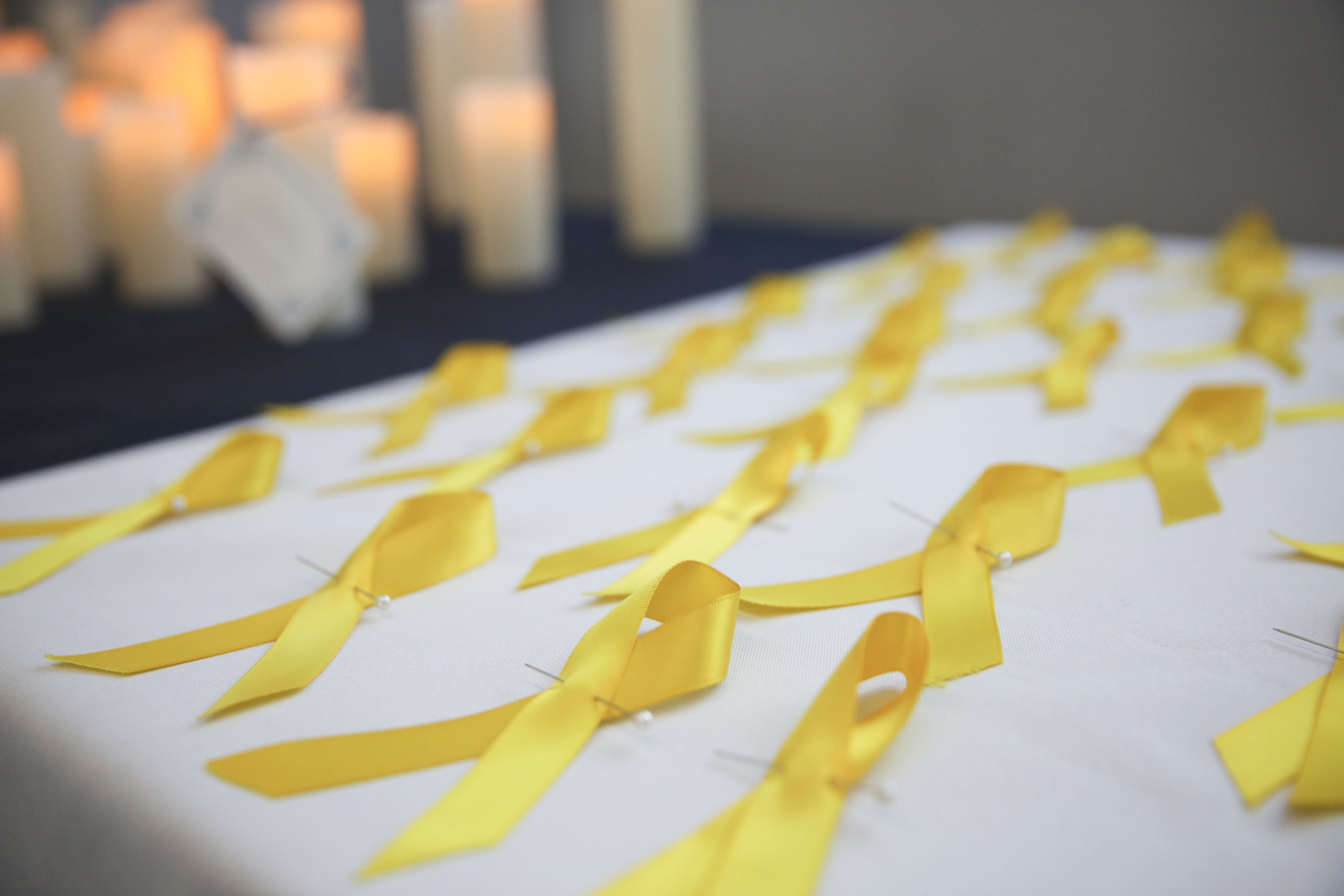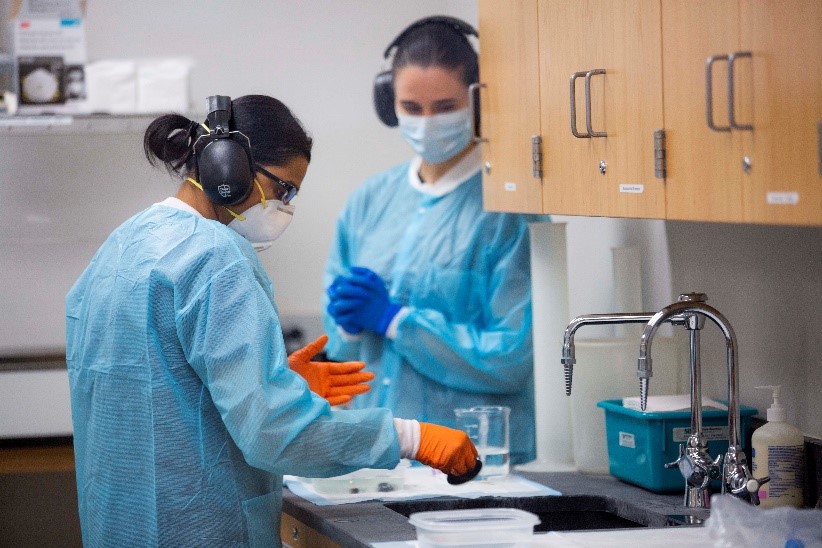
Missing Persons
The UNTCHI Missing Persons Unit provides DNA testing of biological evidence related to the identification of missing and unknown persons as well as mitochondrial DNA testing of hair evidence related to Texas criminal investigations.
The Missing Persons program began in 2002 as a result of the passage of Texas Senate Bill 1304. This bill allowed the establishment of a missing persons DNA database at The University of North Texas Health Science Center, within the Center for Human Identification (UNTCHI). Since that time, funding through the State of Texas and National Institute of Justice has allowed UNTCHI to assist in thousands of missing persons investigations across the country.
UNTCHI reports in a simplified report format. By submitting evidence to the Forensic or Missing Persons Unit for analysis, the customer has agreed to receive simplified reports.
Click here for UNTCHI Simplified Reporting Statement

DNA Testing Services
- Autosomal Short Tandem Repeat (STR) Analysis
- Y Chromosome Short Tandem Repeat (STR) Analysis
- Mitochondrial DNA Sequence Analysis
Types of Cases and Samples Accepted for Testing
- Order of preference of skeletal elements: long bones (femur, tibia, humerus), metacarpals, metatarsals, mandible, teeth (unrestored molars), short bones (ulna, radius, clavicle), patella, vertebrae, ribs, pelvis
- Skull is least preferred
- Hair is acceptable if forcibly removed from unidentified
- Burned remains and paraffin-embedded tissue samples are accepted on a case-by-case basis
- Embalmed remains or samples unknown to originate from an unidentified person are not acceptable
Buccal swabs, blood card, blood
- Prefer a minimum of two biological relatives for submission
- Prefer that at least one maternal relative is submitted for mitochondrial DNA testing
- Most preferred relatives are mother, father, and/or child(ren) of missing person
- Full siblings are acceptable
- Least preferred relatives are half siblings, aunt/uncle, and grandparents
Blood, blood cards, tissue, bone, medical samples
- Toothbrush, razor, oral appliance/dentures, and baby teeth may be acceptable depending on known usage and storage conditions
- Clothing is not accepted as DRS sample
Buccal swabs, blood card, blood
DNA Analysis
The laboratory works with the investigating agency to determine which samples (unknown and/or family references) are the most appropriate for submission and testing. The unknown sample most likely to yield the highest quality and interpretable DNA data is chosen for testing. Generally, both autosomal STR and mitochondrial DNA analysis are performed on unknown samples, but may vary depending on the needs of the case and/or sample. For the purpose of obtaining more DNA data, additional unknown samples may be tested, depending on the resources of the laboratory and the availability of adequate and appropriate samples. To maximize limited funding and resources, the laboratory does not test multiple skeletal elements recovered in the same area for the purpose of comparison to each other unless the skeletal elements clearly represent more than one individual. Family references that are most suitable for kinship analysis are tested as appropriate for autosomal STRs, mitochondrial DNA, and/or Y chromosome STRs. Family references that are not necessary for kinship analysis are archived without testing. Typically, a maximum of three family references are tested to maximize limited funding and resources. The type of DNA testing conducted on each sample, both unknown and family references, is determined by a qualified forensic DNA analyst.
Processing of human hair samples for mitochondrial DNA analysis related to Texas criminal investigations is limited and determined on a case-by-case basis. Due to the ubiquitous nature of hair and the expense, labor, and resource demand of mitochondrial DNA testing, the probative value and significance of an evidentiary hair must be well established for testing approval. The hair must be examined by a qualified hair examiner to determine the following: if the hair is of human origin, the hair is foreign to the known victim standard or other applicable known standards, and the presence/absence of cellular root material. This report must accompany the hair submission.
Submission Forms and Supporting Documentation
There are four different submission forms related to missing persons based on the type of case being submitted (UHR, FRS, DRS, or ULP), as each requires different information. The appropriate submission form must accompany the submission of any sample to UNTCHI and include any necessary and required supporting documentation. The links to all forms are below.
In addition to the UHR submission form, UNTCHI requires a descriptive forensic report be included (unless UNTCHI anthropological analysis has been requested in addition to DNA testing). Acceptable reports include medical examiner, coroner, forensic anthropologist, and forensic pathologist. This report establishes if the unidentified remains are human, conveys the number and type of skeletal elements recovered, verifies the information contained on the UHR submission form, and provides non-genetic information that can be used to fully evaluate any association to descriptors of a missing person provided by a family.
If you are using a new UNTCHI DNA family reference collection kit, please download the FRS Submission Form, as they are no longer included in the collection kits.
FRS submission forms must include the consent form signed by the donor (biological relative of missing person) and the law enforcement agency?s collector. An agency?s consent form is acceptable provided the donor acknowledges voluntary consent. Court ordered consent forms are acceptable.
When submitting samples from more than one unique donor for the same missing person, a separate and complete FRS submission form must accompany each unique donor?s sample.
If a family has multiple missing persons, for each unique donor and each unique missing person, a separate and complete FRS submission form must accompany each donor?s sample for each missing person. This is for the purpose of capturing each missing person?s biographical information and conveying the correct biological relationship of each unique donor to each unique missing person. Note: Multiple buccal swab collections from the same donor are not necessary.
For example, if Jane and her child, Jack, are missing, buccal swabs from Jane?s mother are collected one time as a biological donor for both. Two sets of FRS submission forms are submitted with the donor?s samples. One set of forms documents the biographical information for Jane and that the donor is her mother. The other set of forms documents the biographical information for Jack and that the donor is his grandmother.
The DRS submission form must accompany each submission.
ULP submission forms must include the consent form signed by the donor using his or her current known identity. The consent form must be signed by the law enforcement agency?s collector. An agency?s consent form is acceptable provided the donor acknowledges voluntary consent. Court ordered consent forms are acceptable. Under the sample donor information, include the current known identity of the person. Under the case details section, include the alleged identity of the person.
Use the Forensic Evidence Submission form to submit hair samples previously approved. In addition to the submission form, UNTCHI requires a report from a hair examiner that conveys the hair is of human origin, is foreign to the known victim standard or other applicable known standards, and the presence/absence of cellular root material.
Case Submission
Cases can be submitted in person by appointment or shipped via a trackable courier of your choice to the address below. For submission appointments or shipping instructions, please call the Evidence Specialists at 1-800-763-3147.
UNTHSC Center for Human Identification
ATTN: Evidence Specialist
CBH, 6th Floor
3400 Camp Bowie Blvd.
Fort Worth, TX 76107
Results and Reports
UNTCHI enters eligible DNA profiles into the Combined DNA Index System (CODIS) at the local, state, and national levels as permitted. CODIS notification letters are issued to the investigating agency to inform them of the CODIS entry. Comparisons between unidentified remains cases and family references are conducted through CODIS searching or through a manual comparison as appropriate. Reports are issued in the event of a positive association and/or a requested comparison. Reports are issued via electronic mail to the investigating agency and/or medicolegal authority described on the submission forms. Reports are not issued to courtesy collection agencies of family reference samples.
UNTCHI analysts are available to discuss results and interpretation of the DNA comparison with the investigating agency. Analyst contact numbers are provided in the report. Results may be discussed with additional agencies or persons such as prosecutors or defense attorneys only with permission from the investigating agency.
UNTCHI Humanitarian DNA Database (HDID)
In an attempt to increase the identification of unidentified human remains found within the USA, such as those that may be of foreign nationals, UNTCHI has created a Humanitarian DNA Identification Database (HDID) that enables family reference samples from non-US citizens to be compared with the DNA profiles from unidentified human remains within UNTCHI's local database. While the database is a standalone system and has no connectivity to the FBI or any other NDIS-participating laboratory database, the HDID is supported functionally by the CODIS software provided by the FBI. A search of the HDID with a DNA profile(s) from a non-US family reference submitted by or on behalf of an investigating agency (to include consulates) may be requested if a non-US person has reported that they believe their missing family member has traveled to the USA and/or the investigating agency believes a missing foreign national has traveled to the USA.
For additional information, please refer to our published article in the International Journal of Legal Medicine. The appendix of this article contains guidelines on how to submit references for inclusion in the database and our policy on privacy and reporting.
Contact Us or Send Evidence to Us
Location
- Center for Human Identification | ATTN: Evidence Custodian
- CBH, 6th Floor | 3400 Camp Bowie Boulevard | Fort Worth, TX 76107
- Local Number: 817-735-0606 | Fax: 817-735-0553 | Toll-Free: 1-800-763-3147 | Toll-Free Fax: 1-800-221-3515

